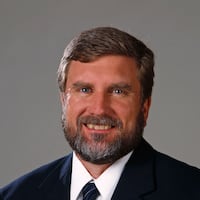RELATED: Recent history of Dayton schools’ facilities
Associate Superintendent Shelia Burton said an evaluation of capital spending needs is ongoing, but estimated the district may have to spend “more than $13.6 million per year.” Abraha budgeted almost $10 million this year and almost $12 million for each of the following four years.
Capital spending the previous three years was less than $5 million combined, according to district documents. Capital spending includes things like building repairs and replacement of vehicles, computers and equipment.
“I didn’t put the $13.6 million they were asking; shocker. I put about $11 million on that one,” Abraha said. “If we put all our spending on capital improvement, our spending in (classroom) instruction will be lower. We need to watch on that one.”
MAY 2018: DPS backtracks, says levy not likely soon
School board member Mohamed Al-Hamdani referenced a previous report calling for the district to spend $13 million per year on capital costs. He added, “We haven’t done anything since the previous report, which was, what? Five years ago?”
Dayton Public Schools built more than two dozen new school buildings in partnership with the state after voters approved a 28-year bond issue in 2002. The new buildings are an average of 9.5 years old, ranging from Kiser, which opened in summer 2006, to Wright Brothers, which opened in January 2012. The district also has older facilities such as the Ludlow headquarters building, the transportation service center, several closed school buildings, and other buildings.
DPS spokeswoman Marsha Bonhart said the district has the 2013 summary Al-Hamdani referenced, and “is now in the process of looking at present-day projections and costs, creating a budget and determining which buildings need upgrading.”
RELATED: Dayton schools’ ad blitz aimed at enrollment
She said the 2013 study “explains expenses needed for roofs, HVAC, plumbing, etc.; basically what is necessary to properly maintain our buildings.” It is unclear which costs are tied to new schools and which are at older facilities. This news organization filed a public records request for DPS planning documents on capital spending early Wednesday morning, and again Thursday, but had not received them by Friday afternoon.
Abraha’s new five-year financial forecast shows DPS solidly in the black, with a general fund cash balance of $78 million at the start of this school year. That’s just over 30 percent of a year’s spending, or roughly 120 days expenses in reserve. Abraha said the Government Finance Officers Association recommends having at least 60 days expenses in reserve, and the bond rating agencies want an agency to stockpile more than 10 percent of a year’s spending.
Abraha projects the numbers to be even better in June 2019, saying DPS is on track to be about $18 million in the black this school year. But $13 million of that cushion is a one-time transfer from the district’s well-funded self-insurance program.
RELATED: State review cites areas DPS needs to improve
Abraha’s forecast shows district cash balances decreasing starting in 2019-20, because she projects revenues to be generally flat the next four years. Revenue has gone up each of the past three years. She projects overall expenses to increase 4 percent per year, including 5-7 percent on wages and benefits, plus the increased capital spending.
The Ohio Department of Education cautions five-year forecasts are “as much art as science,” and DPS’ recent financial forecasts have not been consistent. The forecast Abraha and the school board approved in May, one month before the end of the school year, suggested that DPS would finish 2017-18 at $20 million in the black. The number ended up being $29 million.
That May forecast projected the current school year at $9.6 million in the red. Five months later, the projection is $17.9 million in the black, with the one-time $13 million transfer accounting for less than half of that $27.5 million difference.
RELATED: Dayton Public adds career tech courses at high schools
Abraha said Tuesday DPS has done no significant improvements on the new school buildings since their construction.
Several school board members said the board will have “difficult choices” in the coming years regarding what to spend on. Rhynard said the district could use its “very nice, healthy cash balance” to make fixes. Board vice president John McManus urged the district not to go on a spending spree that would put the district’s current solid financial position at risk.
“We built these great buildings and they’re great assets to the community, so we have a responsibility to make sure these assets are staying afloat,” Al-Hamdani said. “Hopefully once this plan comes up we can have some hard numbers to look at.”
About the Author

